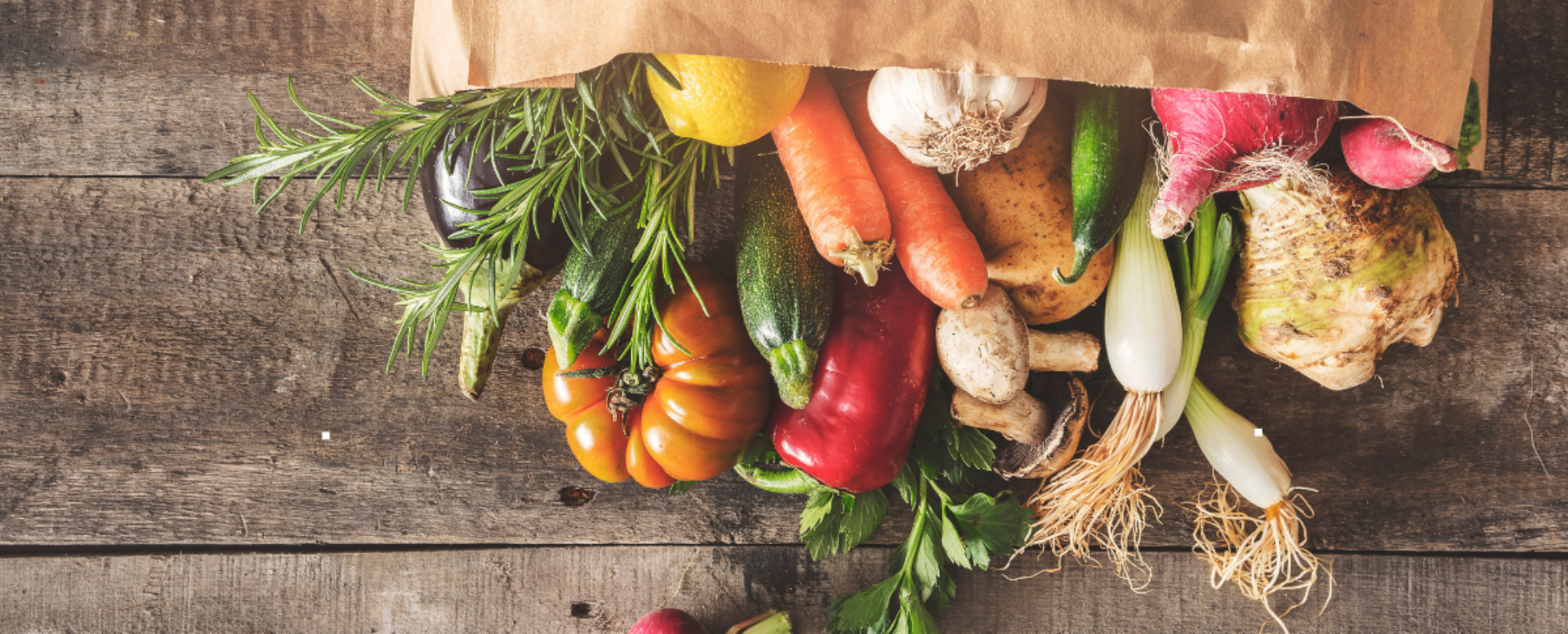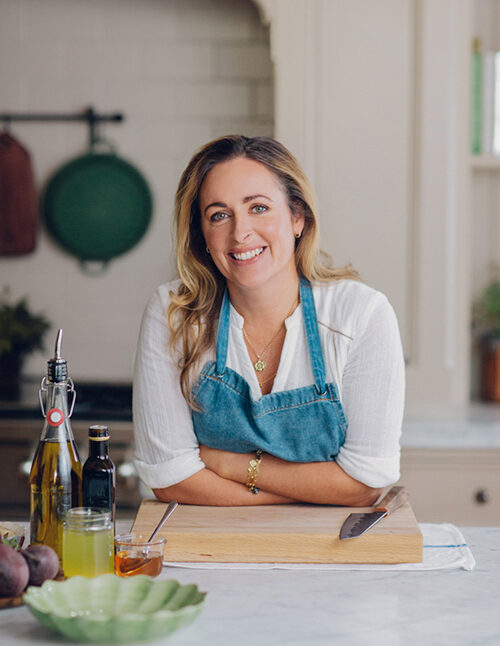How to Spend Less on Healthy Food
Jan 2021

Food is often one of the biggest expenditures in many household budgets, after rent or mortgage payments. It is also non-negotiable: We have to eat, so we have to spend money on food. But many households are feeling the pinch, even more so after the events of last year, and wish to optimise how far their budget will stretch. The food budget is one regular outgoing that we have a degree of control over, so it is often an obvious place to begin.
I hoped it might be helpful to pull together a few suggestions and ideas for simultaneously eating well and saving money. I freely admit that I am not an expert on shopping and cooking on a really tight budget (I would highly recommend the exceptional work of Jack Monroe for this). Please know that I am saying this with enormous gratitude, as I am very conscious of the blessing of having food choices on a daily basis. However, budget is still a consideration alongside variety and nutritional balance*. This is something that my team and I do in our own lives on a regular basis, so hopefully might be able to share a couple of insights.
Part One: Making conscious budget choices
The good news is that it is possible to eat an abundantly nourishing and delicious diet on a relative budget. Healthy eating doesn’t have to be hugely expensive. However, depending on how tight the budget is, compromises may have to be made along the way. It’s a balancing act that we each have to find, according to the unique needs of our households. I think accepting that there are compromises and making choices about which ones matter most to us, is a good way to start thinking about budget priorities.
Here are a few thoughts:
Cooking from scratch (avoiding pre-prepared dishes, ready meals and ingredients certainly saves money).
Accepting a bit of repetition and batch cooking.
Reducing the number of drinks, meals eaten out or take-aways, to re-direct additional money into the weekly grocery shop.
Shopping in different ways, such as changing supermarkets and buying dried goods in bulk online.
Avoiding branded or premium products and looking instead for whole food ingredients and cooking from scratch.
Cutting back on other spending. Prioritising food shopping above other discretionary spending, such as memberships, clothes, holidays, beauty or homeware for example. This is simply highlighting the importance of making conscious choices about what you choose to prioritise. The money often does, afterall, usually come from the same pot.
Fewer specifically health-focused foods (such as premium snacks, drinks, powders or other items like organic food). Non-organic food is not unhealthy, and still provides plentiful flavour and nutrition. Just wash your produce (fruit & veg) first, and peel where necessary. It’s a very personal decision so do what’s right for you.
Deciding which compromises we are prepared to make will depend a great deal on us as individuals. It is, however, well worth having a think about if you want to tighten your food budget. I hope that this offers a few ideas. I am sure I’ve missed a fair few.
* That is also not to say that it is impossible to find variety and nutritional balance on a very tight budget, but it is harder, and may involve using multiple different suppliers. Grocers towards the end of the day may have good offers on fresh produce, and bulk dried goods can be ordered online, or as part of a local co-operative, for example. Using a large supermarket is not often the most cost-effective way to shop, but it is often the most convenient and is available to the broadest range of people. It is however, yet again, another compromise. Basically, I’m trying to say that this topic is complicated and nuanced and highly individual – much like nutrition itself.

Part Two: 7 tips for shopping and cooking well on a budget
1. Meal plan
This is my number 1 tip for helping to eat well on a budget. A meal plan helps you shop for exactly what you need, so food waste is drastically reduced. It saves time and stress throughout a busy week, as you never have to decide what to cook last minute, and it ensures nutritional variety as you can plan for different recipes and meals. Take a look at this article for a step-by-step guide on meal planning, and here is a free printable weekly meal planner to use.
2. Organise your fridge, freezer and cupboards
It’s really helpful to get into the habit of thinking a bit like a shop-keeper when organising your fridge, freezer and cupboards. You want to keep track of your ‘stock’ so you know what’s running out and what you’ve already got plenty of. Keep items on rotation, so that things get used in the order you purchased them, rather than older items staying pushed back for so long they end up going out-of-date. Remember, you’re not saving money if you never eat the food. Try to keep things neat, tidy, well-labelled and organised, as this really helps if you’re searching for ingredients when you need to cook something quickly from scratch.
3. Minimise or eliminate food waste.
According to the BBC, in the UK we throw away almost 20% of the food we buy. This could add up to a whopping £600 worth of food wasted per year for the average household. This has a high environmental cost and it badly impacts our budget too. Meal planning helps with this, as you buy only what you need, but getting inventive with leftovers – perhaps starting by branding them ‘planned-overs’ – and utilising the freezer or slow-cooker to use up or store odds and ends (such as making a bottom-of-the-fridge vegetable stew and freezing in batches – recipe in Simply Good For You will all help too. I will share more on this in the coming months.
4. Focus spending on the essentials
This one might seem obvious, but if you want to optimise the quality of your diet for your available budget, you need to focus that spending on the things that really pack the biggest nutritional punch (such as fresh or frozen fruits and vegetables, high quality proteins, healthy fats, pulses, and minimally processed carbohydrates).
Once those important foundational foods are purchased, you can then consider the nice-but-not-necessary items, such as garnishes, condiments, sweet things, powders, snacks foods, ‘superfood’ products etc if you wish. We do not need to include these items in our diets to eat well, although I completely understand that they might be joyful for some of you. It’s really about prioritising the most important foods first and then seeing what is left over.
5. Exchange your time for cost savings
Pre-prepared and packaged goods, such as ready meals, pre-cooked grains, pulses or peeled and chopped vegetables can certainly save time. But they come at a premium cost. Putting the effort in saves money, while bulk cooking and preparation ensures that that time is still efficiently spent.
6. Watch the take-aways, snacks and coffees
It is worth spending half an hour or so going over your bank statements from the past couple of months and adding up all the discretionary food and drink spending you’ve made above and beyond your essential groceries.
Include all the take-aways, coffees, snacks and drinks that you’d purchased. These items can add up to a significant amount of money. While it is, of course, important to support local establishments at the moment, if this pushes your budget into a place where you feel squeezed on the important nutritional basics, then perhaps it’s worth reconsidering. Set yourself a weekly budget if necessary, and put the remainder towards boosting your grocery shop.
7. Try the discount supermarkets
If you have access to a Lidl or Aldi locally, give them a go. Their range of nourishing whole foods, organic produce and cost-effective olive oil, nuts and seeds are very good. Alternatively, try using a bulk or discount whole food online supplier (for more information, see this article).

I am very aware that this is not the cheapest way to eat overall, and it is of course possible and necessary for some to reduce this spending further, but I wanted to offer the option of a compromise somewhere between a realistic budget and a dietary intake that is really varied, balanced, nourishing and seasonal. Feel free to tweak, edit and adjust this as much as you would like, to meet either your own nutritional requirements, budget or tastes. This is just an example, but I hope it might offer a few ideas to get you started.
We developed this meal plan based on the following ‘guidelines’:
An allowance of roughly £50-55 budget for a week of meals (breakfast, lunch and dinner) for 2 people. This works out at roughly £1.25 per meal (3 meals a day for 2 people = 42 meals = roughly £1.20-£1.30 per meal).
We assumed some basic staples are already in your cupboards (salt, pepper, soy sauce, balsamic vinegar, Dijon mustard, stock cubes / powder, olive oil, spices). Don’t be afraid to make substitutions according to what you have available – most recipes can switch spices, change oils or swap vinegars or mustards without detriment, according to what you have at home.
The meal plan needed to achieve the majority of the Positive Nutrition Pyramid daily (i.e., provide balanced and varied nutrition) and include > 30 different plant foods in a week. We have assumed a mostly vegetarian diet to increase how many people this meal plan appeals to, but have included one meal of oily fish for important omega-3 fatty acids. You can adapt this plan to meet your own requirements.
It should use ingredients available from a mainstream supermarket.
We have also assumed that most drinks consumed would be water (or tea and coffee according to what you have already). Desserts are mainly simple fresh fruit, and snacks have not been included as (hopefully!) the meals are well-balanced enough already to keep you feeling full and satisfied between meals.
Monday
Breakfast
Overnight oats* served with pumpkin seeds & a handful of (defrosted) frozen berries
* mix 1 cup oats with 1 cup milk or water and leave in the fridge to soak overnight
Lunch
Serve with a big leafy side salad and 1 slice rye toast
1 apple
* use defrosted frozen peas instead of fresh, ½ red onion instead of a shallot and omit the chives and spring onion
Dinner
Pumpkin Dahl Soup* topped with 1 tbsp extra pumpkin seeds
2 satsumas
* add a couple of cubes of frozen spinach for extra greens if you are able
Tuesday
Breakfast
Overnight oats served with pumpkin seeds & a handful of (defrosted) frozen berries
Lunch
Leftover vegetable frittata with leafy side salad and 1 slice rye bread
1 banana
Dinner
Pumpkin Dahl Soup, topped with 1 tbsp extra pumpkin seeds (for crunch!)
1 pear
Wednesday
Breakfast
1 poached egg on 1 slice rye toast with tomatoes & rocket
Lunch
Smoked mackerel salad with lettuce, chopped tomatoes, cucumber and a lemon zest, olive oil and lemon juice dressing. Serve with 1 handful of steamed baby potatoes
Thursday
Breakfast
Lunch
Quick Baked Beans* on toast with a side of rocket
1 apple
* Omit the thyme if you don’t have any to hand
Dinner
Halloumi salad: Griddled halloumi slices served with griddled baby potatoes (leftover from lunch yesterday), salad leaves, tomatoes, cucumber and an olive oil vinaigrette, pumpkin seeds.
1 banana
Friday
Breakfast
1 poached egg on 1 slice rye toast with tomatoes & rocket
Lunch
Soup for the Soul with roasted chickpeas
2 satsumas
Dinner
One pot veggie pasta (roughly half recipe to serve 2 – and I used ½ red onion rather than a shallot)
Defrosted berries with a dollop of natural yoghurt
Saturday
Breakfast
* Use almonds instead of walnuts and omit the raisins
Lunch
Leftover Soup for the Soul with leftover roasted chickpeas
1 pear
Dinner
Vegetarian Chilli* served with brown rice & steamed kale
1 apple
* Use this recipe for the chilli, but swap the sweet potato for pumpkin & omit the celery. Quadruple the recipe and add some frozen spinach for extra greens – 4 cubes is ideal
Sunday
Breakfast
Stewed apple* with natural yoghurt and seeds
* You’ll have some leftover from making porridge
Lunch
Smashed peas* on toast with side salad with 1 poached egg and olive oil drizzle
1 banana
*Use this recipe for the peas, but omit the mint and prosciutto
Dinner
Leftover chilli served with a jacket potato, natural yoghurt & side salad
Shopping List
Store cupboard:
- 250g red lentils
- 1kg brown rice
- 95g pasta (I used wholewheat spaghetti)
- 1 tin borlotti beans
- 3 tins chickpeas
- 2 tin kidney beans
- 1 tin cherry tomatoes
- Tomato puree (1 tube)
- 1 kg oats
- Pumpkin seeds – around 150-200g
- Almonds – around 200g
- 2 small loaves German-style rye bread
Fresh fruit:
- 4 lemons
- 1 large orange (loose)
- 8 satsumas (loose)
- 6 pears (loose)
- 1 large cooking apple / 2 medium (loose)
- 1 bag apples (6)
- 8 bananas (loose)
Frozen:
- 500g Frozen berries
1 kg Frozen peas
900g frozen spinach
12 Eggs
Fresh vegetables:
- 1 bag red onions (I got 1 kg bag)
- 1 large bunch fresh coriander
- 3 butternut squash
- 500g cherry tomatoes
- 1 bulb of fennel
- 3 courgettes
- 1 large carrot (loose)
- 1 green chilli
- Fresh ginger
- 2 bulbs garlic
- 2 bags mixed leaf salad (or 1 whole lettuce)
- 1 bag rocket
- 1 cucumber
- 1 bag baby potatoes
- 2 jacket potatoes (loose)
Fresh – other:
- 1 packet smoked mackerel
- 500g natural yoghurt (organic)
- 4 pints milk (organic, semi-skimmed or other milk of your choice)
- 1 block halloumi (225g)
This basket – from a large supermarket – cost approximately £55, calculated 23rd November 2020. Prices may vary according to season and your local shops. You’ll have leftovers from many of the dry and frozen goods (like grains, pasta, nuts etc.), which could be used for another week.
MORE TO EXPLORE
Please note that the information on this website is provided for general information only, it should not be treated as a substitute for the medical advice of your own doctor or any other health care professional providing personalised nutrition or lifestyle advice. If you have any concerns about your general health, you should contact your local health care provider.
This website uses some carefully selected affiliate links. If you buy through these links, we may earn an affiliate commission, at no additional cost to you. This helps to keep all of our online content free for everyone to access. Thank you.



